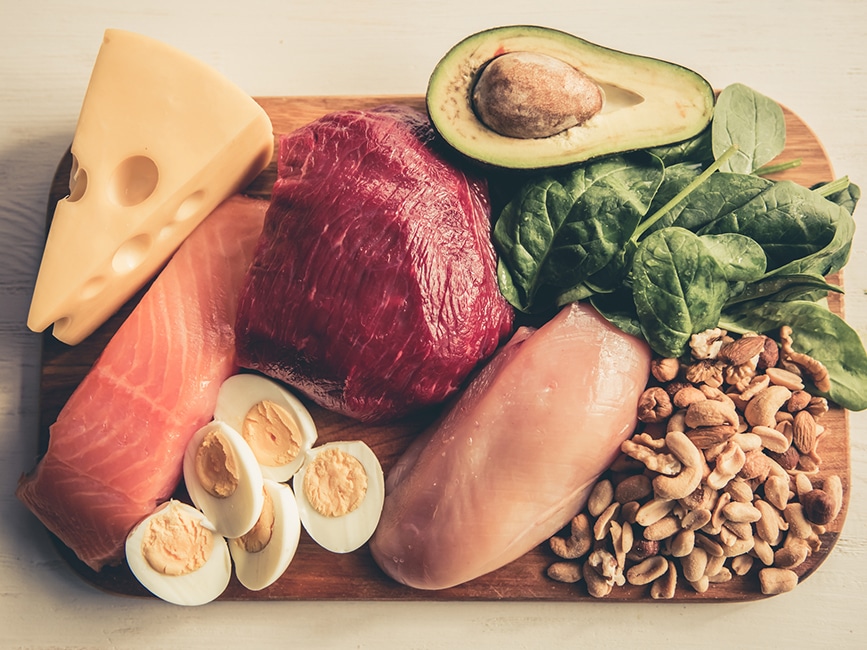IOM report sets dietary reference intake levels for calcium and vitamin D

The Institute of Medicine (IOM) recently released a report that redraws the dietary reference intakes (DRIs) for vitamin D and concludes that calcium supplements are often not needed. The report, based on a comprehensive research review of nearly 1,000 published studies as well as testimony from scientists and stakeholders, includes the following recommendations:
- Most Americans and Canadians up to age 70 need no more than 600 international units (IUs) of vitamin D per day to maintain health; those 71 and older may need as much as 800 IUs because of potential physical and behavioral changes related to aging.
- Calcium needs range from 700 to 1,300 milligrams per day (mg/d), based on age. The lowest amount—700 mg/d—meets the needs of almost all children aged 1–3, while 1,000 mg/d is appropriate for almost all children aged 4–8. Adolescents aged 9–18 require no more than 1,300 mg/d. For practically all adults aged 19–50 and for men up to age 70, 1,000 mg/d is sufficient. Women over 50 and men over 70 need no more than 1,200 mg/d.
- Some adolescent girls may not get quite enough calcium, and there is a greater chance that elderly individuals may fall short of the necessary amounts of calcium and vitamin D. These individuals should increase their intake of foods containing these nutrients and possibly take a supplement.
Additionally, a large amount of evidence, which formed the basis of the new intake values, confirms the roles of calcium and vitamin D in promoting skeletal growth and maintenance and the amounts needed to avoid poor bone health, states the IOM report. The committee that wrote the report also reviewed hundreds of studies and reports on other possible health effects of vitamin D, such as protection against cancer, heart disease, autoimmune diseases and diabetes. While these studies point to possibilities that warrant further investigation, they have yielded conflicting and mixed results and do not offer conclusive evidence that vitamin D has these effects. Rigorous trials that yield consistent results are vital for reaching conclusions.
“There is abundant science to confidently state how much vitamin D and calcium people need,” said committee chair Catharine Ross, professor and Dorothy Foehr Huck Chair, department of nutritional sciences, Pennsylvania State University, University Park, in an IOM press release. “We scrutinized the evidence, looking for indications of beneficial effects at all levels of intake. Amounts higher than those specified in this report are not necessary to maintain bone health.”
The report also notes that confusion about the amount of vitamin D necessary to ward off deficiency has arisen in recent years as tests that measure levels in patients’ blood have become widely used. The measurements of sufficiency and deficiency—the cut points—that clinical laboratories use to report test results have not been based on rigorous scientific studies and are not standardized. This lack of agreement means the same individual could be declared deficient or sufficient, depending on which laboratory reads the test. Many labs appear to be using cut points that are higher than the evidence indicates are appropriate, so the number of people with vitamin D deficiency may have been overestimated. Based on available data, almost all individuals get sufficient vitamin D when their blood levels are at or above 20 nanograms per milliliter, as measured in America, or at or above 50 nanomoles per liter, as measured in Canada.
The new DRIs are based on much more information and higher-quality study results than were available when the DRIs for these nutrients were first set in 1997. At that time, limitations in the evidence resulted in intake levels called Adequate Intakes, which are rougher estimations of people’s requirements than the new values. The old and new DRIs reflect different calculations and are not directly comparable.
Sandy Todd Webster
For 22 years, Sandy Todd Webster was the chief architect of IDEA's content program - including the award-winning IDEA FITNESS JOURNAL and IDEA FOOD & NUTRITION TIPS - the industry's leading resources for fitness, wellness and nutrition professionals worldwide. She created, launched and nurtured these brands and many others during her productive and purposeful IDEA tenure. Sandy is a Rouxbe-certified professional plant-based cook and a Precision Nutrition Level 1 Coach who is pursuing a Master's degree in Sustainable Food Systems through The Culinary Institute of America (expected August 2024). She plans to combine these passions with her content expertise to continue inspiring others to make the world a more just, healthy and regenerative place.






